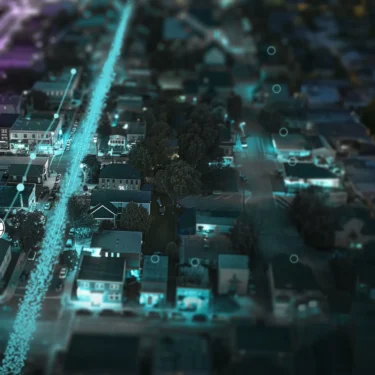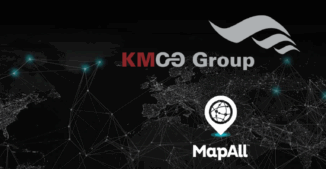Increasingly connected, the physical and digital worlds are becoming one. Devices that communicate with each other, as well as with data centers and their clouds, promote a significant improvement in everyday processes that we never even imagined could work differently.
Whether in our private lives or in large corporations and industry, the Internet of Things has arrived on everything imaginable and we can certainly expect much more in the coming years.
What is the Internet of Things and how did this term come about?
Internet of Things or IoT, means that objects, people, smart houses and data are connected through the internet, allowing exchanges of information between various things in real time.
This makes it possible for the devices to adapt to the users’ usage and routine and still be able to predict behavior trends, for example.
The term was devised in 1999 by British researcher Kevin Ashton, who developed a system of sensors capable of connecting the physical world to the internet while working on a design for electronic stock tags using radio frequency technology called RFID.
How IoT works and how it relates to Industry 4.0
Nowadays chips, processors and sensors are becoming cheaper, more versatile and intelligent.
They can be used on various devices in order to obtain and process data. This integration between software and hardware is the perfect match for the development of new technologies and applications in the real world.
In this context, the Internet of Things converges multiple technologies uniting:
1. Wireless connection chips: enable a huge range of devices to be connected to wi-fi, for example;
2. Cloud processing and Big Data: this is where a huge data source is amalgamated and stored;
3. Geolocation: allows you to know the user’s exact location, to provide services based on your location. The convergence of these factors resulted in a worldwide mobilization of crowdfunding to leverage research related to IoT devices. To give a better idea, in 2008 the number of connected devices exceeded the world population. In 2013 there were already 13 billion devices and the projection according to Cisco, is that in 2020 there will be 50 billion devices.
Connected, these “things” is expected to generate a data volume of 50 trillion GB£ and generate around US$19 trillion in the next decade.
The new Wi-Fi technologies are increasingly present in indoor applications where, together with secure architectures, they will provide transformational power for Industry 4.0.
Here – too, the market is huge.
Europe is the third largest market for IoT after the Asia-Pacific and North American regions, which respectively account for 35.7% and 27.3% of worldwide IoT spending. However, Europe is forecasted to see the fastest growth in market size and revenue from these three leading regions at an annual growth rate of 15.7% through to 2025. By 2023, Europe is expected to account for 25% of worldwide IoT spending. North America and Asia-Pacific will have lower annual growth rates of 11% and 13.2% respectively.
There were 14.2 billion connected things in 2019, a figure that is estimated to go up to 25 billion by 2025, of which 4.9 billion will be in Europe.
And it is through all this growth of the IoT in the market that we can say that it makes the actions of Industry 4.0 viable.
It provides useful data for business optimization, enabling the creation of smarter, highly connected, automated, agile and sustainable businesses.
Through intelligent analysis, companies are able to make predictions about innumerable internal and external processes, in addition to monitoring in real time all service demands.
Thanks to this, managers can see in advance the slightest sign of lost productivity or failures in operational processes.
In this way, real-time analysis and sensory systems can transform raw data into valuable insights for companies in the industry, which can offer higher value-added services to their customers.
In addition to the benefits we have discussed so far, there are several other advantages for companies to invest in IoT, whether these companies are active in the telecommunications, health or transportation market, for example.
Here are some other benefits of this relationship:
Operational efficiency and profit maximization: Through automation and connectivity, it is possible to reduce errors, problems in internal / external processes and costs with the cycle in perfect working order, in addition to improving the use of resources that the company has. In this way, it is possible to make the execution of the service more agile and flexible, which optimizes the profits of the companies.
New business models: Digital Transformation has required organizations to adopt new technologies in their environments and adapt their internal culture to this new era. By relying on IoT, companies are able to transform their business models, taking advantage of all the benefits of technological innovations. Through digital services, they are able to improve their relationship with their customers, deliver products with higher quality and generate valuable information for business.
Accurate decision making: Monitoring large sectors of the market is not an easy task. Often, managers need to make decisions quickly, without full knowledge of how the systems work. Now, with the help of the Internet of Things, companies have a greater amount of information that undergo detailed analysis. This facilitates making decisions that can be more accurate and based on facts.
Have you noticed how the IoT can revolutionize the market as a whole?
It is capable of leveraging the fourth industrial revolution, allowing this sector to become more intelligent and effective. Those companies that bet on this trend can stand out in the market, outperforming competitors in the race for Digital Transformation.
How MapAll™ uses IoT to be the first complete system for tracking the construction and maintenance of fiber optic networks
Last week, we posted an article on this Blog about the Connected Britain event where we have been nominated for IoT Award.
MapAll™ has been nominated for this award because it is the first complete field and office based tracking, updating and record-keeping system for the telecommunications industry.
By recording the exact route and status of any cable or connection at the click of a button, MapAll™ enables engineers in the field to create accurate and detailed infrastructure maps, available to be viewed in real time anywhere.
This instant information speeds up response times and the platform offers a complete view of all works in progress and their history. Mapall™ also provides the certainty that the information is stored on secure servers, which can be accessed remotely at any time.
MapAll™ is built around a proprietary core system designed especially for telecommunications that allows us to build several modules around it.
The core is always licensed with the module purchased. It is a simple process to add more modules.
MapAll™ was designed to integrate with existing operating systems as well and we are constantly updating the list of available modules to make each process even more accurate.
And if you want to know even more about our complete system, don’t miss Connected Britain as we have a lot of news to announce.
For more information, subscribe to our Event Update List.






